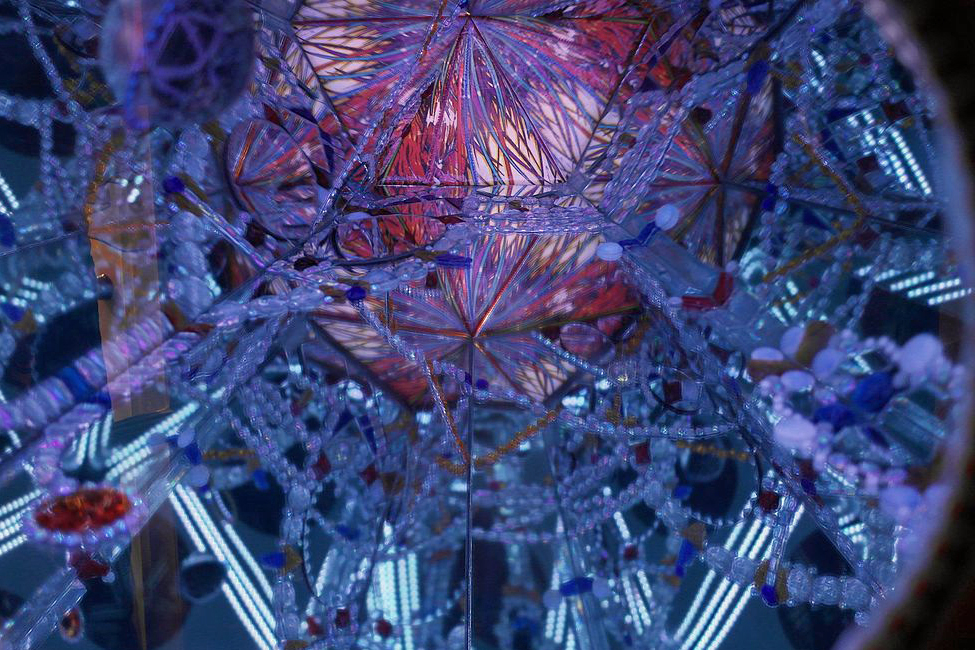
Traditionally, Advent is thought of as a time of waiting. What happens in that waiting space? Perhaps it is a time of seeing the way patterns of hope, desire and longing disperse, change and reform so that we become aware more deeply of the plans God has for Creation.
The kaleidoscope is a wonderful instrument. Originally designed as a children’s toy, it is more than that. The instrument uses the same particles in each new pattern created. With only a touch of a finger the patterns formed by those particles change and new patterns of beauty emerge.
The space of Advent acts in many ways like a kaleidoscope. Each new pattern emerging in our time of Advent reveals a little more of the plan of God for creation. New patterns break through the darkness and reveal the light. God’s plan is fueled by love. It is a plan constructed by, and of, love by the God who is Mystery, who is Love. This God is beyond history but has entered into history. Advent invites us to await each new Incarnation of this God of love.
Each culture, each race, each time has access to such an understanding of God’s creative love. Each one has its own time of Advent. The Jewish religion and culture lived a particular Advent of thousands of years. They interpreted God’s messages through the kaleidoscope of their experiences – wars, exiles, both abandonment and salvation experiences, leadership changes and prophetic calls to grief and hope. Each change in their history meant a change in the kaleidoscope revelation of the work of God in their community, in their covenant with their God. The pattern sometimes revealed their own failure in keeping their Covenant but always called the people of the Law back to their centre as scripture tells us. Their Advent, their time of waiting ultimately only deepened their hope.
Is it the same with us today? Does this time of Advent, our time now, lead us to a revelation of the pattern of love of which Julian of Norwich was certain, “All shall be well and all manner of things shall be well”.
The faith which underlies a true experience of Advent has to take us beyond simply viewing or reflecting on a beautiful form as it emerges with each pattern change. In this time, we also recognise our shadow. Our racism, self-hate, misogyny, lack of a generous spirit, dissolution of faith, war and violence are all part of God’s revelation and call to forgiveness. We are always invited to begin again.
In the waiting time we become aware of how patterns change and why. We often do this by looking back at preceding patterns and reflecting on the way the fragments have connected with each other.
Advent is not a passive experience though. While Advent invites us to deepen the pattern of incarnation as we wait the fullness of Love, it also brings an awareness of God’s call to deepen our love and faith. Advent calls us to action, healing, growth. This action can be small or large, or somewhere in between. It can be one off or continuous. What we cannot be is passive and aloof in our time of waiting.
Groups and individuals such as the women’s movements, the climate workers and conservationists, groups working against world poverty and hunger, individuals such as Rosie Batty of Australia, working against domestic violence and Sr Lucy Kurien of India show us the way.
Sr Lucy Kurien is the founder of Maher in India. In the last 25 years, Maher has built up over 65 homes across India, refuges for scores of homeless women and children. Sr Lucy’s Maher organisation provides food, shelter, education, spiritual direction and profound immersion in contemplative practice to them all.
In this Advent waiting space we are called to change creation’s pattern: to incarnate God’s love wherever we are, in big or small ways. In the words of Psalm 129, “in the spirit of love, let us always seek the good for the sake of creation, the house of God”.
Colleen O’Sullivan rsj
